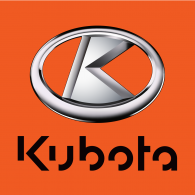How To Choose The Right Size Generator For Your Needs
Imagine standing at the edge of a construction site or preparing for a significant outdoor event when the power flickers—or fails. That moment can be more than inconvenient for anyone responsible for maintaining operations—it can be costly, unsafe, and completely preventable. That’s where generator hire comes in. But choosing the right size generator isn’t as simple as picking the biggest one available or the cheapest option on the list.
Hiring a generator that’s too small can overload your system and shut down critical operations. On the other hand, one that’s too large may burn more fuel than needed, pushing up operational costs unnecessarily. Whether you’re managing a building site, planning an event, or looking to secure backup power for an emergency, selecting the correct generator size is critical to ensuring reliability, efficiency, and cost-effectiveness. Let’s break down the key considerations to help you make the right call when choosing a generator—especially if you’re exploring
generator hire in Gladstone.
Table of Contents
- How to Calculate Your Total Power Load Requirement
- Understanding the Risks of Over- or Under-Sizing Your Generator
- Choosing a Generator Based on Application Type: Site, Event, or Emergency
- Why Starting Wattage Matters for Heavy-Duty Equipment
- Portable vs Stationary Generators: What Size Fits Your Space?
- Fuel Efficiency & Runtime: Matching Generator Size with Operational Duration
- How Professional Advice Can Prevent Downtime & Damage
- Seasonal & Environmental Factors That Influence Generator Sizing
- Keep Your Site Powered – Hire the Right Generator for the Job
How to Calculate Your Total Power Load Requirement
Determining your power needs is the first—and most essential—step when hiring a generator. All electrical appliances have power ratings, typically shown in watts or kilowatts. But it’s not just about adding up those numbers. You also need to account for two distinct wattage types.
To calculate your total load requirement, follow these guidelines:
- List all appliances and equipment you plan to run simultaneously, noting their wattage requirements.
- Differentiate between running watts and starting watts. Running watts refer to continuous operation, while starting watts account for the initial surge some equipment needs.
- Add the total running watts and the highest starting wattage separately to ensure safe operation during start-up loads.
Getting this step right sets the foundation for selecting the correct generator size and ensures smooth operation throughout your hire period.
Understanding the Risks of Over- or Under-Sizing Your Generator
Choosing a generator that’s too large or too small comes with potential pitfalls that can affect performance, cost, and safety.
Here are the consequences of improper sizing:
- Oversized generators may burn more fuel than necessary, increase hiring costs, and occupy more physical space.
- Undersized generators are prone to overloading, shutdowns, and damage to connected appliances, leading to unplanned downtime and repair costs.
- Incorrect sizing may also breach safety standards, posing a workplace or event setting hazard.
Selecting an appropriately sized generator protects your equipment, saves costs, and supports uninterrupted power delivery.
Choosing a Generator Based on Application Type: Site, Event, or Emergency
Different applications demand different generator specifications. Understanding the context in which you’ll use the generator helps narrow your options.
Here’s how generator needs differ by application:
- Construction sites often require rugged, fuel-efficient generators to handle heavy equipment, lighting, and changing load demands as the build progresses.
- Outdoor events need quieter generators with stable voltage to run sound systems, lighting, and catering equipment without interference.
- Emergency backup situations demand reliable, automatic-start generators that power essential circuits like lighting, refrigeration, and communications.
Tailoring your choice to the application ensures optimal performance and operational safety.
Why Starting Wattage Matters for Heavy-Duty Equipment
It’s easy to overlook starting wattage, but this factor is crucial for equipment with motors or compressors.
Here’s why starting wattage should never be ignored:
- Heavy-duty tools such as welders, mixers, and air compressors require a burst of power at start-up, often double or triple their running wattage.
- Failing to account for this surge may lead to generator overload, resulting in tripped circuits or equipment failure.
- A generator with appropriate buffer capacity can handle these fluctuations smoothly, protecting your machinery and maintaining productivity.
Accurately assessing running and starting wattage is key to safely powering industrial-grade tools.
Portable vs Stationary Generators: What Size Fits Your Space?
Size isn’t just about electrical output but also physical space, mobility, and installation logistics.
When considering generator type, keep these points in mind:
- Portable generators are ideal for low to mid-range loads and for flexible, mobile use on rotating job sites.
- Stationary generators suit long-term projects or higher-load operations but require proper clearance and often lifting equipment to install.
- Limited access or tight site conditions may necessitate a smaller footprint, influencing your generator selection.
Continually evaluate the physical environment and logistics before choosing between mobile or fixed generator models.
Fuel Efficiency & Runtime: Matching Generator Size with Operational Duration
Choosing the right size generator involves balancing power with fuel efficiency, especially for extended use.
Here are the key factors to consider:
- Oversized generators may consume fuel inefficiently, leading to higher operational costs without proportional output.
- Smaller units, if undersized, may require more frequent refuelling, interrupting workflow and increasing maintenance demands.
- Mid-sized generators with efficient load handling often provide the best compromise between runtime and fuel economy.
Understanding your operational hours helps you select a generator that can sustain long durations without sacrificing efficiency.
How Professional Advice Can Prevent Downtime & Damage
Relying on guesswork when hiring a generator introduces unnecessary risk. Engaging professionals ensures you get a unit that matches your actual power requirements.
Professionals offer crucial benefits:
- They assess your site load and recommend safe capacity buffers.
- They account for load fluctuation, environmental conditions, and start-up surges.
- They also guide you through safe generator placement and refuelling practices.
Seeking expert advice ensures uninterrupted operation and reduces the risk of equipment failure and project delays.
Seasonal & Environmental Factors That Influence Generator Sizing
Environmental conditions can influence the performance and capacity of your generator. Temperature, weather, and location should all be considered.
Take the following into account:
- High ambient temperatures may require derating, meaning your generator produces less power, and a larger unit may be needed.
- Wet or humid conditions require weatherproof enclosures, which can affect space and ventilation requirements.
- Remote or outdoor setups may benefit from units with extended runtime or remote monitoring to reduce servicing interruptions.
Factoring in environmental conditions ensures your generator remains reliable regardless of the season.
Keep Your Site Powered – Hire the Right Generator for the Job
When your project depends on reliable energy, every decision counts. At Chaffey Power, we provide tailored generator hire to match your specific requirements. Whether powering up a construction site, planning an event, or preparing for an emergency, we help you choose the right equipment for uninterrupted performance.
Explore our full range of
services and hire equipment with confidence.
Contact us to discuss your
generator hire options today.










